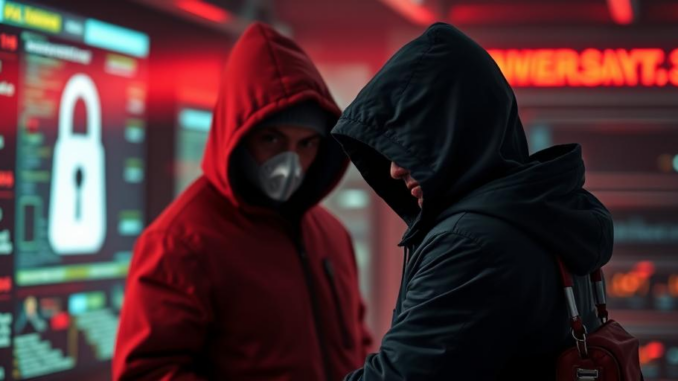
Summary
Crystal D, a supplier of corporate awards and recognition products, suffered a cyberattack in March 2025. The LockBit ransomware group claimed responsibility. While initial reports indicated no customer data compromise, the attack disrupted operations, impacting communications and order fulfillment. This incident highlights the increasing vulnerability of businesses to cyberattacks and the importance of robust security measures.
Explore the data solution with built-in protection against ransomware TrueNAS.
** Main Story**
Alright, let’s talk about the Crystal D cyberattack. It’s a real-world example that hits close to home for many businesses today, especially those of us working in the supply chain. Crystal D, you know, the corporate awards company out of Minnesota, they got hit pretty hard back on March 7th, 2025. LockBit, that notorious ransomware group, took credit for it. And let me tell you, the disruption was significant.
The Initial Chaos
Can you imagine your phone lines and email going down all at once? That’s exactly what happened to Crystal D. Suddenly, they couldn’t talk to their customers, couldn’t process orders, and basically, business ground to a halt. It’s like being thrown back into the Stone Age. Initially, it seemed like customer data was safe. But even without a confirmed data breach, the delays in fulfilling orders caused major headaches. Think about the domino effect—their customers, and their customers, all feeling the pinch.
LockBit’s Involvement and the Ransomware Landscape
Then, on April 8th, LockBit officially claimed responsibility. Ransomware, as you know, is that nasty business where they encrypt your data and hold it hostage until you pay up. While the full scope of the data breach is still unclear, it’s a chilling reminder of how aggressive these ransomware guys are getting. It’s not just about the money anymore, it’s about disruption and reputation damage, too. You know, I read a report that ransomware attacks have increased by something like 300% in the last year alone. Scary stuff!
Crystal D’s Recovery and Response
Now, to their credit, Crystal D didn’t just sit there and take it. They acted fast, shutting down their systems to contain the damage and launching a full-blown investigation. I heard they had a team working around the clock. By mid-March, they had managed to get some of their systems back online, which is pretty impressive considering the circumstances. They’re still investigating, of course, and they’re assuring everyone that they’re taking security seriously. Which, frankly, they kind of have to at this point.
What Can We Learn?
So, what’s the takeaway from all this? A few things, really:
- Cyberattacks are getting more sophisticated: These criminals aren’t just some script kiddies in their mom’s basement anymore. They’re organized, well-funded, and constantly evolving their tactics.
- Cybersecurity preparedness is no longer optional, it’s essential: We’re talking robust security measures, regular vulnerability testing, the whole nine yards. You can’t afford to cut corners here.
- Incident response plans are vital: You need to know exactly what to do the moment you suspect an attack. Who do you call? What systems do you shut down? Time is of the essence.
- The ransomware threat is real, and it’s not going away: Groups like LockBit are becoming more brazen. If you aren’t careful, you could be next.
Ultimately, the Crystal D story is a wake-up call. It’s not a matter of if you’ll be targeted, but when. Being proactive, staying informed, and investing in your cybersecurity infrastructure? That’s what separates the businesses that survive from the ones that don’t.


The disruption to communications highlights the importance of having redundant systems. How can companies ensure business continuity during an attack when primary communication channels are compromised? What alternative methods are most effective for maintaining contact with customers and employees?
That’s a great point about redundant systems! Exploring alternative communication channels is crucial. Beyond traditional methods, have companies considered leveraging secure messaging apps or satellite phones for critical communications during outages? I’d be keen to hear what strategies others have found effective.
Editor: StorageTech.News
Thank you to our Sponsor Esdebe
Crystal D didn’t pay the ransom, right? I’m curious if companies are starting to factor in the potential PR boost from *not* caving to ransomware demands. Free awards for everyone if they win against cybercriminals?
That’s an interesting angle! You’re right, there could be a reputational upside to standing firm against ransomware. It might signal strength and resilience, potentially attracting customers who value security. I wonder if companies are starting to weigh that against the cost of downtime? Food for thought!
Editor: StorageTech.News
Thank you to our Sponsor Esdebe
Crystal D’s swift action to contain the attack and restore systems is commendable. How important is employee training in recognizing and reporting potential threats early in preventing such attacks from being successful in the first place?
Absolutely! Employee training is paramount. Think of employees as the first line of defense. Regularly updated training on phishing, social engineering, and unusual system behavior can drastically reduce successful attacks. A culture of reporting suspicious activity, without fear of repercussions, is equally vital. How often do you think companies should conduct this type of training?
Editor: StorageTech.News
Thank you to our Sponsor Esdebe